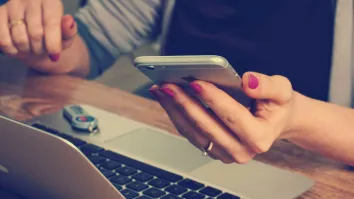Why The Crypto Winter Might Mean A Better Future for Crypto
By Sumit KumarBy Sumit Kumar, Managing Director and Partner, Boston Consulting Group
Global crypto markets have experienced a jarring few weeks, as the perfect storm of challenges sought to sink this trending industry.
Up to USD 2 trillion of wealth has been wiped off crypto assets, with retail investors in an unenviable position as biggest losers in this rout. Bitcoin—long the poster boy of cryptocurrencies—is down 50 per cent from its peak in November 2021.
The challenges facing crypto are multifaceted and complex. Insider trading allegations have triggered significant instability, with anonymous wallets loading up tokens before major listings on large CeFi platforms leading to an immediate sell off post-listing, driving down prices with significant losses for retail investors.
Terra’s dramatic collapse has resulted in numerous theories. Rumors swirl of institutions dumping stablecoin TerraUSD (UST) to reduce its peg, forcing the founders to sell BTC to maintain the peg—subsequently becoming one of the reasons for the BTC price crash. The de-stabilization of the dollar-pegged USDT (price fell below USD 1) and collapse of UST resulted in the withdrawal of over USD 9 billion of USDT, battering the resilience and reputation of crypto.
Poor market understanding of how algorithmic stablecoin works, and how investors can take advantage of it, caused significant issues. The total collapse of Terra’s sister token, LUNA, is a harsh demonstration of this reality.
These seismic market shifts are now causing very real panic in the crypto investor community. Far from the bullish talk and enthusiastic memes of 2021, major threads on popular community site Reddit are now crowded with the grief of despairing retail investors.
The perils of a greedy market
Terra offers a fascinating snapshot of the seeming contradictions of popular crypto assets. The single biggest use case for UST has been depositing in Anchor Protocol, which promised high, stable annual percentage yield returns of up to 19.5%. As much as 75% of total UST was invested in Anchor.
When compared to standard investment returns, it’s clear why Anchor could be attractive. Yet it remains unclear how these platforms can offer such high rates, unless they are undertaking overcollateralized high-risk lending, or imposing high transaction costs that enable these levels of return by staking or burning investors’ equity to driver user growth.
Many Cefi players in Asia do lend to multiple high-yield P2P lenders, which can be notably risky if the value of underlying collateral coins slide—as seen in the case of the recent Luna-UST collapse.
As these yields drop, it triggers significant trends for pulling out these coins and converting them to safer investments. This in turn initiates a price collapse and reenergizes the cycle of fear in investors—the very scenario which occurred with UST when Anchor reduced its rates and made them variable.
The challenges for crypto are compounded by the market realities. Many crypto positions are leveraged against other crypto assets, so when the selloff begins, it triggers a domino effect across markets that is likely to lead to even more significant losses.
Retail investors stand at the sharp end of this knife, often lured in by trending tokens, and the previously attractive gains of meme-driven assets without real utility, which have now taken a beating in the crypto crash of 2022.
Crypto is not an isolated financial market, and impacts to investors here will have wider repercussions. Many crypto investors are significant investors in other asset classes, with high-net worth individuals (HNIs) having over 50% penetration (by access) in crypto assets. Losses in crypto can deliver a knock-on impact, triggering irrational behavior in other asset classes as investors begin a selloff to manage margin calls resulting from leverage on crypto assets.
NFTs ape the rise and fall of tokens
Crypto tokens aren’t the only trending assets taking a pounding in 2022. The sensational hype of non-fungible tokens (NFT) has quite literally aped this trend, with the success of vastly celebrated NFTs such as Bored Ape now crashing by over 50 per cent in floor prices (in dollar terms).
NFT sales are down 90 per cent from their peak, and active wallets on NFTs have also fallen by 90 per cent. With rising rates, investors are increasingly shy of app-speculative investments, and, as arguably the most speculative asset out there, NFTs are taking the brunt of the impact.
The case of the NFT for the first ever tweet sent on Twitter (then Twttr) is a salient example—sold originally for USD2.9mil, and now unable to find a buyers at even one-tenth the cost based on the last auction on April 5. Not so much non-fungible, as non-sellable.
Broad ecosystem interest is also taking a hit, with google search volumes for the term NFT down by 80%. Collectors are now attempting to discern between overhyped random NFTs like Bored Ape, against those with some genuine collection value in areas such as art, music, and design.
Web 3.0 is another evolving area which could change wider perceptions of crypto and its underlying technology of blockchain. Champions of Web 3.0 envision a third-generation Internet built on machine learning, artificial intelligence, and blockchain, offering a decentralized and democratized future where websites and apps can communicate and respond in smarter, more human-like ways. A simplified understanding would be that Web 2.0 is about the ‘what’, and Web 3.0 seeks to focus on the ‘how’.
While the dream is compelling to many, the reality today is Web 3.0 hosts very few truly useful applications and is dominated by entertainment and gaming functionalities. As champions of Web 3.0 continue to push for decentralized networks as part of a user-controlled and user-validated world, the question is likely to be how receptive regulators are to this transition, especially for financial institutions use cases in the heavily-regulated financial world.
Delivering on this idea will require significant investment of time and resources, yet the number of developers working on Web 3.0 remains relatively limited—less than 20,000 developers compared to over 15 million in the JavaScript ecosystem.
Managing the macroeconomic reality of crypto
Crypto’s bruising is likely to shift the macroeconomic dynamics of these markets. Venture capital (VC) funding for crypto projects is likely to dry up and become far more selective in which projects it backs. At the same time, rising interest rates will mean that smaller crypto-focused funds will find it more challenging to raise new investment.
Even larger funds have taken a beating. Paradigm, Sequoia, all lost significant value as a result of direct investments in crypto tokens, likely leading to a lock on their liquidity. These once-bitten-twice-shy funds are now expected to be more selective about their next round of investments.
The current macroeconomic situation will also set a high bar for new crypto and Web 3.0 projects, with a need to demonstrate significant traction and strong signs of real value to acquire funding. As interest rates rise, that caution is likely to trigger large volumes shifting away from crypto and back towards traditional asset classes. Addressing these concerns will require crypto stakeholders engaging with regulators and regulated agencies more robustly, and necessitate clear investment in anti-money laundering (AML) and other compliance solutions.
Centralized crypto exchanges such as Binance and Coinbase, as well as decentralized finance (DeFi) exchanges and wallets such as Uniswap and Metamask, will have to significantly invest in know-your-customer (KYC) and AML capabilities. This will be critical in the face of regulatory shifts as countries increasingly start treating crypto platforms in the same way as legacy investment vehicles, and seek to address growing concerns about money laundering and fraud.
A genuine ability, and commitment, to engage with regulators and build effective compliance technology will represent a key source of competitive advantage for crypto projects moving forward.
Transforming the Wild West into a settled landscape
Increased regulatory review will lead to the rise of national frameworks for blockchain, crypto, and even long-awaited central bank digital currencies (CBDC), as financial regulators look to settle the crypto landscape. This transition is likely to be accelerated as regulators more actively engage to mitigate risks for retail investors, as well as tame the threat crypto instability poses to other asset classes.
The collapse of Terra is widely being touted as crypto’s “Lehman Brothers moment”, with multiple insider trader stories adding pressure to calls for a more established regulatory framework. While libertarian investors and traders may rail against the imposition of stricter financial controls, these frameworks will ultimately be a long-term benefit for the industry.
When discussing the recent Terra crash, US Treasury Secretary Janet Yellen noted “I think that simply illustrates that this is a rapidly growing product and that there are risks to financial stability and we need a framework that’s appropriate by end of 2022.”
With increased regulator participation, we can expect development of more use cases—including CBDC protocols to improve the financial and transaction management systems in each country. These initiatives are already underway in the UK, the US is deliberating them, and Southeast Asian pioneer Thailand is set to launch a groundbreaking CBDC trial in late-2022—although this marks a delay on the initially announced timeline. Indonesia’s central bank, Bank Indonesia, is also in the process of exploring the case for a ‘digital rupiah’ in its own CBDC journey.
Funding into crypto assets is likely to slow in the near-term, as investor trust suffers in the wake of the Terra collapse. Those crypto assets with genuine utility are likely benefit from this shift, as funding for these more stable assets grows. We believe the likely future is a crypto market dominated by fewer, more powerful protocols, echoing the rise of a limited number of technology giants in the wake of the 2000 implosion of the dot com bubble.
This transforming landscape may ultimately lead to the demise of those crypto protocols with no demonstrable utility, and rise in share of genuine crypto use cases. A similar transition was seen in the wake of the dot com bubble, as the bubble burst on speculative players with limited real-world value, leaving a void in which resilient players expanded to dictate the future digital ecosystem which emerged.
In crypto terms, this could include the rise of functionalities such as digital identity with KYC on blockchain, media copyrights on blockchain, expanding blockchain payment systems, and more. The timid bear market will benefit developers and protocols which really invest in security and real utility, reducing future risks.
If this disrupted and repositioned crypto market is to nurture growth in the wider blockchain infrastructure, it will need to attract and retain the right talent to develop this ambitious scope. This would require the genesis of genuine real-world use cases which developers view as sustainable career opportunities—a feeling likely amplified by the recent crypto collapse.
In the short- to medium-term, there is likely to be a reduction in financial arbitrage in crypto markets, with investment capital once more flowing back into the secure seas of regulated financial markets.
This also likely signals the end of eye-watering 20%+ DeFi yields. The DeFi protocols will push traditional financial systems to remove inefficiencies, and offer new rewards to consumers, but the whiff of infinite returns (with selective examples of what the industry calls Ponzi schemes) that has trailed the crypto industry so far might finally be washed clean. In an ecosystem fundamentally built on shared trust, this crash-enforced transition might be the most important yet for long-term growth. One key point to remember is that even with a big hit to Luna and UST and a 50%+ crash in prices, the market has not witnessed large scale bankruptcies yet—this signifies the faith and trust of investors, especially the HNIs and large institutions.



















 Advertise
Advertise








